Using Cash Flow Analysis To Find Cash In Your Business
It is said that cash is the lifeblood of a business. That is never truer than when your business is growing. The faster the growth, the more cash you need. Even if growth for you is getting better rather than bigger, it still takes cash. Cash flow analysis is a vital component that is often overlooked. But doing so may cost you money that you already have.
Using Cash Flow Analysis
Finding hidden cash in your business requires looking at your business in a different way. Accounts receivable, inventories, accounts payable, and other assets are can be seen as “pools” of cash that can be tapped if you need them.
Along with the pools, your revenues and your operating expenses are like “streams” of cash flowing through the business. Some of the streams drain your cash out, and others bring it in. The key it reduce the drain increase the flow
Where’s the Money In Your Business?
Cash hides in two places in your business—in your assets and in your operations. Finding hidden cash in your business requires looking at it in a different way. And you only need to understand a few basic ideas about cash flow analysis to find it.
Your accounts receivable, inventories, accounts payable, and other assets are essentially “pools” of cash waiting to be tapped if done properly. Your revenues and your operating expenses, on the other hand, can be looked at like “streams” of cash running through your business. Some of the streams are draining it although you can reduce the drain, while others are nourishing it and you can increase the flow.
In physics, momentum is a function of both velocity and mass. The larger an object is and the faster it moves, the greater its momentum and its power. And that’s the same principle of the cash in your business: the more cash you have at your disposal and the faster it moves through your business, the greater your financial momentum and the greater your cash power.
In other words, you can increase your company’s cash power when you release more cash from the “pools”, or stocks, of cash that appear on your balance sheet, or when you move cash through your business more quickly.
Identifying hidden cash in your business is not overly complicated. You just need to know where to look and have the right tools. Here are eleven places you might find unexpected reserves of cash:
- Accounts Receivable: By decreasing the amount of time it takes to get paid from your customers, you will increase the amount of cash you have on hand.
- Inventory: If yours is like many other businesses, you have excessive amounts of money tied up in inventory. Work on having “just-in-time inventory” and you will improve your cash situation.
- Equipment and Facilities: You may have money tied up in outdated, inefficient equipment. You could save money over time by simply upgrading them, or you may be able to free up cash by leasing back assets.
- Accounts Payable: You may be able to stretch out your payments to your creditors over a longer period of time, or take advantage of early payment discounts where possible.
- Debt: Sometimes, it makes sense to take out a loan for some expenses such as large purchases. But, if servicing the loans is especially costly, it can better to pay off those loans early. Get creative with your financing options.
- Revenues: Besides raising prices or selling more goods, finding ways to decrease variable or direct costs could increase the flow of money into your business.
- Expenses: Small reductions in your monthly expenses can add up to big improvements in your cash power. It pays to review these very carefully. Also, changing the way non-cash expenses are accounted for can help.
- Purchasing: Always negotiate the most favorable terms possible with your suppliers. Review your current contracts and look to improve the existing terms, if possible.
- People: Do you have the most cost-effective and productive balance of full-time, part-time or seasonal employees for your business operations?
- Business Systems: If you haven’t already, systematize your business operations. By becoming more efficient and productive you cannot help but to improve your cash situation over time.
- Bank Accounts: Talk with your bank and try negotiating more favorable rates or terms, and looking to take advantage of any special programs at your financial institution.
Know Your Financials
In practice as well as in your financial forms, cash is really an indicator of the way you run your company. If cash moves quickly and productively through your business, and generates a good profit, then your business is most likely working well.
If, on the other hand, your balance sheet is lop-sided with unneeded assets and crippling debt, is an indicator of issues that need to be addressed. And, if your income statement is bleeding cash and are hindered from making a decent profit because of unproductive systems, then that, too, must be worked on.
Fortunately, most businesses do have hidden cash they can access. By looking at these 11 potential hiding places we have described here, you may find unexpected sources of cash that you could really use.



